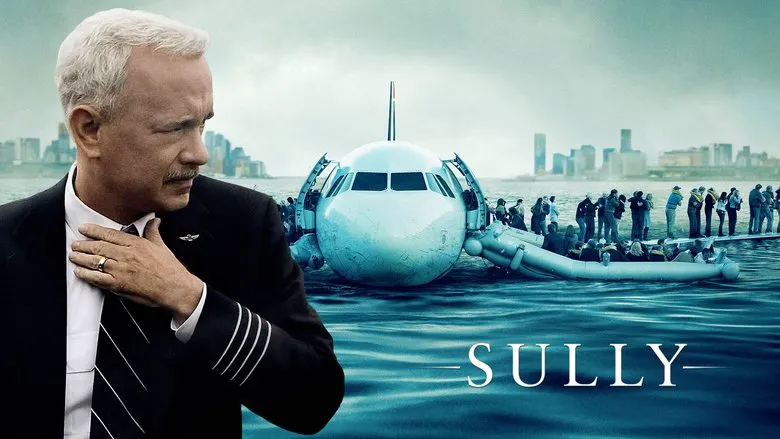Sully: A Story of Skill, Not Just a Miracle
Clint Eastwood’s Sully initially appears to lack the high-octane drama typically associated with disaster movies. This stems from the fact that the real-life “Miracle on the Hudson” was, thankfully, a story of survival without loss of life. The film compensates for this absence of manufactured drama by offering a portrayal of unwavering realism.
On January 15, 2009, US Airways Flight 1549, carrying 155 passengers and crew, departed from New York’s LaGuardia Airport. Shortly after takeoff, a bird strike resulted in the failure of both engines, necessitating an emergency landing. Captain Chesley “Sully” Sullenberger, overruling the suggestions of air traffic control, made the courageous decision to land the aircraft on the Hudson River. The seamless coordination among the crew and emergency responders ensured the survival of all on board, without serious injury. Despite being celebrated as a hero, Sully was subjected to an investigation by a board questioning his judgment, implying that he had unnecessarily risked lives by not attempting to reach an airport. The film chronicles Sully’s internal struggle with doubt as he strives to defend his actions against those who second-guess his instantaneous decisions.
Eastwood and Hanks: A Powerful Combination
A collaboration between director Clint Eastwood and actor Tom Hanks inevitably commands attention . Such a project carries a certain inherent prestige, an expectation that these cinematic giants will deliver nothing short of excellence. Sully largely meets these expectations, though it stops short of being a truly groundbreaking masterpiece. The hurdle isn’t the work of Eastwood or Hanks, but the nature of the event itself.
The Authentic “Miracle”
The “Miracle on the Hudson” was an extraordinary event, one that defied expectations and highlighted the best qualities of humanity. Landing a plane on water is inherently more perilous than landing on solid ground. The universal survival of those aboard is often attributed to a miracle, but in truth, it resulted from the high proficiency of skilled professionals working harmoniously, supported by well-prepared emergency response teams. Robert Zemeckis initially considered adapting this story, ultimately setting the project aside, finding it too “sterile.” He instead created the fictional Flight, a crash narrative involving loss of life, a pilot battling addiction, and the intense psychological drama of a flawed but ultimately heroic individual. While a strong movie with talented actors, Flight took great liberties with real events.
A Devoted Recreation
EastWood chose a different pathway. His vision meticulously reconstructed the events of that fateful day, minimizing dramatic fiction, and faithfully illustrating the conditions inside the plane’s cabin and cockpit, the exchanges through air traffic control, and the National Transportation Safety Board hearing that unfolded in its aftermath. It is unavoidable that this documentary-like approach reduces the perceived suspense of the drama, given how audiences are generally aware of the way the events turn out.
A Celebration of American Resourcefulness
Eastwood, known for his conservative views, deftly honors American pride in this movie. However, it is conveyed not by way of superficial grandstanding, but much more powerfully as the product of everyday individuals performing what is asked of their jobs, and thereby enriching the nation as a whole. Eastwood’s is a version of America sustained by its heroes, whose people find strength, even inspiration, through examples that involve airplanes and aviators specifically. Pilots enact near-impossible feats of airmanship, flight attendants assist passengers, ferry operators arrive on the scene with immediate haste, the Coast Guard rallies all their possible resources, navy divers descend into the icy water, journalists make sure the word gets out there, and the mayor arrives to offer what support he can while abandoning his many appointments of the day. It paints an image of collective action, all underneath the symbolism and unifying elements of a flag. What makes this vision so hard to reject is that it’s all completely and exactly what did occur. It took only 24 minutes to rescue all of the passengers and crew who were aboard the aircraft
Emotional nuance
Though even in retelling what occurred along many different perspectives, eliciting tension from the situation in the film is nevertheless tough to realize completely. Eastwood’s primary focal point lies on Sully’s struggle over whether the decision he was faced with under a very limited timeframe of 35 seconds was indeed the rightcall . Creative liberties were even used by the creators so to make the official investigative board appear somewhat more adversarial than they might’ve been depicted as truly. Still in the universe of patriotic heroism, the only valid opponent to the figure of “Super Sully” is indeed he himself.
Sully showcases that through diligence, any individual is able to come together towards ensuring that basic respect towards each human life is protected.
Miracles consist mostly in something divine, but the content of Eastwood’s newest work expresses more closely something human (and paradoxically quite realistic or factual) as might be expected from what otherwise is the depiction of a barely-longer-than-minutes type of journe